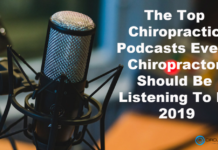This is supposed to be an article about Whole Life Insurance, and for those who have “eyes to see” it is. However, before discussing product, philosophy and process must first be scrutinized. Only then will we be in a position to determine the value of a product.
 The prevailing methodologies of most Financial and Insurance Planning are plagued with an error that will almost inevitably be a fatal flaw to the ultimate value of these plans to the client. The source of the error may sound overly simplistic to state, but the implications are profound and far reaching beyond our ability to measure.
The prevailing methodologies of most Financial and Insurance Planning are plagued with an error that will almost inevitably be a fatal flaw to the ultimate value of these plans to the client. The source of the error may sound overly simplistic to state, but the implications are profound and far reaching beyond our ability to measure.
The problem is that the stated objectives of most plans and their underlying philosophies violate the core principles of basic economics. While I believe most financial advisors are honestly trying to do what’s best for their clients, a lack of economics training and the tools to test the validity of one strategy versus another limits their ability to clearly discern substance from illusion in the plans they create.
From my observations of the financial services industry it seems to me that most of the training and education professionals receive is in product and company knowledge, basic tax law, historical performance of various assets, and sales skills. While these areas are absolutely essential for any advisor to understand, they leave professionals deficient in the skills and knowledge necessary to perform real economics analysis. A closer look at some common methodologies, when overlaid by a discussion of economics principles, should help identify flaws and give clarity to alternate approaches which conform much more closely with sound economic philosophy.
My definition of the word economics is “The Science of Scarcity.” Any time we are considering utilization of a scarce resource we have an economics dilemma. Money is certainly a scarce resource, but we must remember that it is not the only limited resource in people’s lives. Hence,economics is not inherently a financial discipline, but rather the science of the efficient use of any resource.
Economic “costs”, therefore, are not limited to money, but rather any resource which is under-utilized becomes a cost from an economics perspective. Furthermore, in economic terms, “risk” is not limited to the potential loss of money, but is broadened to include the possibility of under-utilization of any resource, including, but not limited to, lost money. We and each of our clients possess numerous non-financial resources that must also be considered. These include assets such as time, effort, focus and attention, hope, faith, love, integrity, desire to contribute and excel, and willingness to take risk. It is entirely possible (and actually quite common) for the disclosed “price” of a choice to be low, but for the economic “cost” to be extremely high.
So a true “cost-benefit analysis” must consider more factors than what readily meets the eye. In addition to the obvious (what is “seen” in economics jargon), we must also consider the consequences which are “unseen” but nevertheless real. Embezzlement could be an example of an economic loss that is real but unseen. These “seen” as well as “real but unseen” factors include both short- and long-term consequences, and both primary and secondary effects. They include the impact of a choice not just in one area but in all areas. If we understand and believe that the ultimate objective of any economic planning in which we participate is to help a person achieve what he or she really wants most in all areas of his/her life, then we must be concerned with all scarce resources all the time.
This is admittedly a tall task, but anything less is obviously less than ideal. In fact, if we want to maximize our own income and potential as professionals, we need to understand economics as it applies to our own self interest. In a free-market economy, DOLLARS FOLLOW VALUE in the long run. So if you want a dollar that you currently do not possess, then obviously somebody else currently possesses that dollar. The only way that the person will part with the dollar is if he believes that the value you are providing is worth more than the dollar he is giving up. Hence, in order to achieve maximum profitability over time, you must learn to use your unique abilities to provide maximum value to others. If you do not have the skills, tools, or willingness to do that, then you always will be vulnerable to losing your customer to someone else who has the ability and desire to help that person identify and achieve what he wants most in all areas of life, both short and long term. If you pay the price to provide this level of value to your clients, they will never leave you, and your only competition at that point will be a person’s lack of concern for his own future.
With core economics philosophy in front of us, let’s consider some common planning methods and test how they withstand economic scrutiny. The problem begins with the stated objective of most planning approaches. By their own admission, most plans are designed to meet the stated needs and financial goals of the client. While this sounds like a worthy objective at first glance, it is actually a serious violation of basic economic philosophy.
If comprehending both what is seen and unseen, now and into perpetuity, is difficult for us as professionals, what could possibly qualify the individual, who has come to us for help, to really know what his needs will be over time? Is it possible that what he says he needs and wants might not actually be what he would want or need if he could see the end from the beginning? For example, I could ask a person how important disability income planning is to him and he might say, “It’s not important at all.” Is it possible that the assumptions he holds and based his answer on, i.e. what he “sees”, is not at all congruent with the reality he will face? If he ends up permanently disabled a month later, would he change his answer? If we take his answer at face value and design a strategy based on what he thought he wanted, would we really have helped him get what he wants most out of life?
 In order to generate proposals, advisors typically need to “fix” a number of unknown variables in order for their software to calculate. The most common approach is to either ask the client what he thinks the variables will be (such as inflation, market performance, interest rates, tax laws, life expectancy, health status, future income needs, desired future value of estate, etc.) or to tell the client, based on our understanding of historical data, what values would be reasonable.
In order to generate proposals, advisors typically need to “fix” a number of unknown variables in order for their software to calculate. The most common approach is to either ask the client what he thinks the variables will be (such as inflation, market performance, interest rates, tax laws, life expectancy, health status, future income needs, desired future value of estate, etc.) or to tell the client, based on our understanding of historical data, what values would be reasonable.
However, does what the client or the advisor “thinks” inflation will be have anything to do with what inflation actually will be? Does what we or our clients “think” about any of these variables have any influence whatsoever on the reality that will unfold? Obviously the answer is, “No, of course not.” Therefore, is there much probability that the “answers” our software generates based on these inputs will be anything remotely close to what the client actually experiences throughout his or her lifetime? Probably not. Then why do we ask these questions? My experience is that we do what we are trained to do, and we are unaware of any better alternative. Upon completion of the plan, most honest advisors tell their clients something like the following, “The only thing we know for sure is that all of these numbers will be wrong. We will try our best to make adjustments each year in an annual review.”
Even the more advanced techniques, such as Monte Carlo simulations, while certainly more sophisticated and comprehensive in their methodology, are still limited by the probabilities gleaned from historical data. If we had a guarantee that history would repeat itself in all areas of possibility, then we would be fine using such approaches. The problem is that we have no such guarantee.
By contrast, according to the “science of scarcity”, our only stated objective should be to achieve maximum utilization on all available resources with the highest degree of certainty possible. The client’s stated needs or goals are irrelevant when the objective is maximization. Most people, limited by preconceptions and misinformation, will shoot for far less than their maximum potential if asked to state their needs and goals.
For example, a client might tell me what his perceived life insurance needs are, but if he knew he was going to die next week, his stated need would be irrelevant, he would want as much as he could get. And since he may in fact die next week, the only right amount for him to have would be the amount he would want if the event actually occurred; in other words, the maximum.
 A person may tell me what he thinks his retirement income needs will be, but does he really know? No, he does not. How does he know what a dollar will even be worth in the future? How does he know how long he will live or what his health will be? What if he has cancer and a cure is discovered, but it costs 100 times more than the medical costs he had “planned” for? What new and exciting things will he want to do or own in the future that he has not even considered today? How can he know today how much money he will want to leave behind to charity or his heirs forty years from now? Is it possible that the same person may answer differently at age 90 than he did at age 40? Because of these and many other possibilities, the only right answer to the question, “How much money will you need at retirement?” is, “I don’t know. As much as I can get.”
A person may tell me what he thinks his retirement income needs will be, but does he really know? No, he does not. How does he know what a dollar will even be worth in the future? How does he know how long he will live or what his health will be? What if he has cancer and a cure is discovered, but it costs 100 times more than the medical costs he had “planned” for? What new and exciting things will he want to do or own in the future that he has not even considered today? How can he know today how much money he will want to leave behind to charity or his heirs forty years from now? Is it possible that the same person may answer differently at age 90 than he did at age 40? Because of these and many other possibilities, the only right answer to the question, “How much money will you need at retirement?” is, “I don’t know. As much as I can get.”
What people really want, when their minds are opened to the possibility, is the maximum value in every area of their life with as much certainty as possible. Even those who are self-proclaimed “risk tolerant” are kidding themselves. We should assume that everyone has a risk tolerance of zero, meaning that if it was possible, they would want every economic choice they ever make to work perfectly. No one really wants to lose money, they just think that it is a prerequisite to making big money because that is what they have always been told. If they could make the same returns with no risk, everyone would want to. I am told that Warren Buffett, a somewhat successful investor himself, has three main rules of investing: Don’t lose money, don’t lose money, don’t lose money.
So how do we discover strategies that will give people what they really want, short- and long-term maximization of all resources with minimal risk, with the highest degree of certainty?[quote_center] Process, not product, is the Key.[/quote_center]
The first step is to have the skills and take the time to help people discover what they really want most in life. Only when we understand their true desires and objectives can we begin to test the likelihood of various strategies getting them where they want to be. In determining what they want, separating methods from objectives is absolutely critical. For example, having a paid-off home is not an objective, it is a method that the client believes will give him what he wants. What he really wants is not a paid-off home, but the security and peace of mind it gives him, or the increased cash flow, or happiness based on a spiritual philosophy, etc. We must not allow people to believe that their preferred method is the objective in and of itself. It will inevitably lead to economic risk and loss every time.
Next, we must have the skills and tools to test the possible outcomes of any given choice or combination of choices over time. This is similar to the process employed by a master chess player. Rather than trying to predict the future moves of the opponent, even if significant historical data on that person’s past performance is available, his objective is to make moves that leave him in the ideal position, both in terms of safety and opportunity, across the widest range of possible circumstances. The ability to effectively make such moves will be entirely based on his ability to think through all possible outcomes of a given choice, ideally all the way out to the end of the game. This ability is very rare, and extremely difficult to acquire, but it is what separates great players from good or average players.
Average players may understand perfectly each individual piece and what it can do, the relative value of the various pieces, and the rules of the game. But the game is won by effectively coordinating the various pieces over time based on the approach mentioned above, not by simply focusing on the most “powerful” pieces or some preconceived move. Sometimes, the queen can become much more powerful by simply moving a pawn. Master players do not focus on the inherent strength of individual pieces or products, but rather on the strategic coordination of all of the pieces. Master players also value protection at a premium, even above opportunity. They are patient because they know that if they can avoid losing their resources that eventually lucrative opportunities will arise.
 Chess is a game about economics (utilization of scarce resources) and many of the same principles apply to both. So the best way to make economic choices is not to bet on the future based on results from the past, but to test the performance of every choice against the widest range of possibility, from absolute best case scenario to absolute worst, including the most probable scenario based on historical data. If we can identify strategies that out-perform all other alternatives across the widest range of possibility, then we still do not know how things will turn out (best case, worst case, or something in between), but we do know that our selected choices are superior to all others no matter what happens. In other words, we have maximized, or done the best we could do.
Chess is a game about economics (utilization of scarce resources) and many of the same principles apply to both. So the best way to make economic choices is not to bet on the future based on results from the past, but to test the performance of every choice against the widest range of possibility, from absolute best case scenario to absolute worst, including the most probable scenario based on historical data. If we can identify strategies that out-perform all other alternatives across the widest range of possibility, then we still do not know how things will turn out (best case, worst case, or something in between), but we do know that our selected choices are superior to all others no matter what happens. In other words, we have maximized, or done the best we could do.
My experience is that the results of such an approach will out-perform the client’s stated needs and goals significantly, and without much of the risk he thought he must take to even achieve his goals. Additionally, the best strategies for maximizing resource utilization also contain maximum loss prevention contingencies acquired at no net economic loss compared to the alternatives. So people end up with maximum protection built in whether they initially stated that objective or not. Because ultimately, people really do want protection benefits, they just have never been shown how to acquire them without a loss of wealth. An economics approach, rather than a traditional “planning” approach, will lead to these benefits and results nearly every time.
So what does this have to do with Whole Life Insurance? Everything. From an economics perspective, a guaranteed dollar is worth more than a projected or non-guaranteed dollar. What does the internal rate of return of Whole Life cash values have to do with maximizing economic potential? Very little. The guarantees built into the contract, starting with the death benefit but including cash value and premium guarantees as well, have macro-economic value that does not show up on an illustration or ledger. There are so few “moving parts” inside a Whole Life Insurance contract that ownership of the contract provides a level of certainty that cannot be obtained in any other way. That certainty, in turn, allows people to make decisions external to life insurance, but with other resources, that they never would have made without Whole Life.
This is analogous to driving down a 100 mile stretch of highway. If the road is dark, and all around is snow and ice, how aggressively do you drive down the road? The possibility of black ice or snow will limit your behavior. Now, in hindsight, once you have driven the road, you may realize that there was actually no snow or black ice and you could have driven faster safely. But did you actually drive fast or slow? The possibility of problems limited your actions, even though in hindsight it all may have worked out fine. Contrast that with the same 100 mile stretch of road in the daytime in the middle of summer with no traffic. Does the increased certainty allow you to change the way you drive, without fear? In the end, the road may have been identical in both scenarios, but your behavior varied greatly based on the degree of certainty you had before you made the drive.
 Many at-risk products or investments such as Variable Universal Life, mutual funds, IRAs or 401(k)s may work out great in hindsight, but people will not feel safe making significant, bold choices in other areas of their lives based on the expected performance of these assets because there is little certainty ahead of time. They will be in a cautious, wait-and-see mode through most of their lives. The true economic cost of this uncertainty over their entire lifetimes is absolutely enormous, but it is not disclosed anywhere in the prospectus or proposal because it is almost entirely “unseen” and therefore undetected. It is difficult to quantify also, and I believe that attempts to quantify this cost are usually understated significantly. How can we know what we might have been able to achieve if fear, worry, and doubt were not in our way? But just like embezzlement, the cost is absolutely real, and will prevent people from achieving their maximum economic potential because fear and uncertainty will prevent maximum utilization. Hence, as stated earlier, the disclosed “price” of a strategy such as term, variable, or survivorship life insurance may be low, but the true economic “cost” of these strategies is enormous due to their lack of certainty.
Many at-risk products or investments such as Variable Universal Life, mutual funds, IRAs or 401(k)s may work out great in hindsight, but people will not feel safe making significant, bold choices in other areas of their lives based on the expected performance of these assets because there is little certainty ahead of time. They will be in a cautious, wait-and-see mode through most of their lives. The true economic cost of this uncertainty over their entire lifetimes is absolutely enormous, but it is not disclosed anywhere in the prospectus or proposal because it is almost entirely “unseen” and therefore undetected. It is difficult to quantify also, and I believe that attempts to quantify this cost are usually understated significantly. How can we know what we might have been able to achieve if fear, worry, and doubt were not in our way? But just like embezzlement, the cost is absolutely real, and will prevent people from achieving their maximum economic potential because fear and uncertainty will prevent maximum utilization. Hence, as stated earlier, the disclosed “price” of a strategy such as term, variable, or survivorship life insurance may be low, but the true economic “cost” of these strategies is enormous due to their lack of certainty.
The real economic value of Whole Life Insurance is not in the rate of return on the cash value, nor in the ability to borrow at low rates, nor in the estate created for charity or heirs upon death, nor the tax treatment of the policy. Rather it lies within the world of economic possibility that opens up to the insured during his own lifetime because of the certainty he now has because of the contract guarantees and the resulting choices he can now make in other areas of life without fear, worry, or doubt. The insured quite literally becomes the beneficiary of his own life insurance policy during his own lifetime, perhaps many times over. How do you quantify the economic value of that freedom, or in other words, the macro-economic rate of return on a Whole Life policy? I believe it is impossible. How can you duplicate the economic value of that freedom, without using Whole Life and without increasing the economic risk or cost? I believe that is impossible as well.
 Garrett B. Gunderson is a champion of business owners, professionals and individual investors. He has dedicated his career to debunking the many widely accepted myths and fabrications that undermine the prosperity and joy of millions of hard-working, honest Americans. Gunderson’s company, Freedom FastTrack, coaches and empowers its members to build sustainable wealth consistent with their passion, knowledge, and life’s purpose. For more information, visit www.FreedomFastTrack.com.
Garrett B. Gunderson is a champion of business owners, professionals and individual investors. He has dedicated his career to debunking the many widely accepted myths and fabrications that undermine the prosperity and joy of millions of hard-working, honest Americans. Gunderson’s company, Freedom FastTrack, coaches and empowers its members to build sustainable wealth consistent with their passion, knowledge, and life’s purpose. For more information, visit www.FreedomFastTrack.com.










